Landing on Our Tires in Kuala Lumpur
The Sim City 2000 theme song poured out of my phone and, with it, we from our beds. We made our way downstairs to the finest breakfast of the entire trip to date. The Hotel Puri had filled the garden courtyard with a lavish buffet.
A central round tiered table contained all kinds of pastry, fruit and yogurt. A side table contained many steaming trays of traditional Malay breakfast foods (fried noodles, fried rice and a kind of salty porridge, alongside flapjacks, (chicken) sausages and home fried potatoes. A central beverage bar served (admittedly mediocre, but infinite in quantity) coffee, teas, and juices. And in the back corner, a fellow was dutifully raging on eggs to order. We were quite thrilled, and when the cab that was called for us by the hotel was quite late, we wandered into the street and flagged one of our own, making our way to the bus station in plenty of time.
The ride to Kuala Lumpur (or as the locals seem to all refer to it, KL) seemed to take only 15 minutes, so furiously were the two of us working on correspondence on that bus. When the bus began to unload we were quite startled to find ourselves not only in the giant and teeming city of Kuala Lumpur, but also unloading not at a central bus station, but at a seemingly random corner in the city. We piled our things and sat down on the curb, pondering our next steps. Scott made radio contact with our Malaysia Bureau Chief, Smita Sharma, while I began to field questions from the group of English-speaking KL-ites who were mostly well dressed business people. They were gathering around us, curious about the cycles. The city of KL was clean and mechanized, not so dissimilar from Singapore, at least from our then vantage point. I was demonstrating the Speed TR’s folding capabilities to a fellow who had come over to ask us if we needed a taxi, and then stuck around. I explained to him “no, we are going to cycle;” Scott had arranged a rendezvous with Smita at the most obvious landmark we could see, a large reddish tower emblazoned with the gold lettering “Times Square.” So, bidding adieu to AsaiWheeling’s new friends, we climbed on the cycles, fully loaded, and careened into KL’s traffic-clogged streets.
Wheeling in Kuala Lumpur proved to be (perhaps unsurprisingly) something in between riding in the reasonably quiet, regimented and rule-bound traffic of Singapore and the snarling honk-filled madness of a city like Jakarta. We had yet to see a bicycle in this city, though the traffic seemed to consist of at least 35% two wheeled machines, and traffic treated us for the most part with respect. Through close communication, and careful signaling of our intent, we were able to make it to Times Square, sweating and starving, but in very high spirits. We then found ourselves sent on a wild meandering goose chase by security guards trundling conflicting views as to where it might be appropriate to park our cycles. Eventually we locked them to a fence that seemed to serve a similar purpose for a number of motor scooters.
The ground floor of the Times Square building in KL proved to be a sprawling mall, where we promptly set up shop in a Starbucks, and were sipping iced coffee and enjoying the free wireless Internet when we noticed a short-haired woman in a Grinnell College tee-shirt hammering on the glass of the window near our seats. This, we realized must be Ms Sharma herself, with a folding cycle that was propped seductively behind her.
We dispensed with the trivialities of small talk, ice breaking, and the like, and dove right into the meat of the issue. Smita informed us that she was ravenously hungry, had a restaurant in mind, and wanted to depart right there and then by bicycle. Scott and I were able to instantly relate, and with the regulation of blood sugar playing such a starring role in AsiaWheeling already, we knew we had found a fine adviser. She also rode hard and fast, which we like, signaling her intent, and demanding her place in traffic. This is, in the humble opinion of your correspondents, the safest way to cycle. A cyclist who lingers at the side of the road, riding slowly and nervously, invites cars to whip past them, and risks an inability to make turns because he or she is forced to be re-entering traffic constantly. A confident cyclist can take his or her place with the slower traffic, and through effective signaling of intent and confident lane occupation, navigate traffic with no decreased fluidity relative to the rest of traffic. With this lesson already well ingrained, we had only to begin the process of the teaching Smita the Field Commands, and she would be ready to wheel with the best of them. We’ve introduced many a person to the craft of wheeling, and Smita proved to be one of the few wheeling pupils for whom we never had to repeat a single command. Needless to say, we were quite impressed.
After parking the bikes, she lead us into the basement of yet another gargantuan sprawling mall, where we found a gargantuan and sprawling food court, called “Lot 10 Hutong.”
“The creator of this food court,” Smita explained, “selected all his favorite street food hawkers and put them all together in one place.” And my goodness, what a place! I enjoyed a bowl of pork noodles (one would have expected these to be a rarity in this Muslim country), Scott a plate of sweet-smelling noodles in dark sauce, and Smita a Penang style curry dish.
Scott completed the experience by running to a nearby shop and buying a number of interesting fruit juices as we commenced the process of making one another’s acquaintance.
We decided to leave the cycles locked there, and climbed onto KL’s monorail system, connecting to the elevated train system, and eventually getting off outside the city center where Smita showed us her apartment. It was delightful, and situated high up in a skyscraper, overlooking a number of apartment blocks, parks, and mosques.
She delighted us with a tidy room to stay in, with its own private bath and shower, bountiful wireless Internet, and a little round of refreshments before we dashed back out for more wheeling.
Back in the city, center we were making our way through traffic, Smita confidently taking bishop, and Scott and I gawking at the massive city that towered around us. KL was certainly a city of malls, and we passed one after another.
Some of them were giant hyper posh projects, which were, Smita explained, kept afloat by middle eastern oil wealth, which would come to KL on shopping tours.
At one point we (for not the first time) became siphoned onto a giant highway. In KL, though it is extremely hard to get to some places without using one, it is actually illegal to ride a bicycle on the highways Luckily, here we were able to make our way back onto legal roads, by taking a shortcut through the campus of a giant Chinese funeral center. An interesting waypoint indeed. Due to the short cut and the whims of the local highway designers, we found ourselves once again somewhat unsure of our exact location.
The streets had become quite empty, and all around us there were giant and seemingly empty apartment blocks. The surrounding grass looked as though it had not been cut in months, and at times was threatening to swallow up what once had been signs of habitation (playgrounds, signage, and the occasional long parked car).
Soon, up ahead of us, there appeared a kind of wall of trash. It was the kind of barrier that one might expect to be erected in cases of street warfare, behind which a soldier might hide from bullets. We rolled to a halt in front of this, and after some conversation, hoisted our bikes over, and began to wheel deeper into the beast. Here in the middle of a towering and crowded city, a crumbling and empty world… the extremes of experience indeed.
We hoisted the cycles over two more barriers and past a couple of burned out cars before we made our way back into civilization. We stopped at an Indian food vendor’s shop and asked what it was we had just wheeled through. “A government housing development,” he answered Smita in Malay. Still under development, we would assume.
We stopped for a cool drink at a local convenience store, and Smita explained how startled she was at the quality of the Indian’s Malay. “He’s been here two years, and his Malay is better than mine…” she grumbled. Even given that Smita had spent about four of the last five years abroad studying in the U.S., we had to admit, this was impressive. It speaks not only to the steadfastness of the fellow’s Malay study, but also to an observation we had made again and again with both Malay and the very closely related Indonesian languages: They are considered some of the easiest in the world to learn. It would be my guess that given a language where the mechanics are quite easy to get down, then the elements that separate the good from the best must be the more subtle, use-based qualities, such as accent, deftness of vocabulary selection, and the like. Regardless, such qualities suggest learning Malay or Indonesian at some point in my life would be very interesting.
We headed to a favorite spot of the Kuala Lumpur literati, the Annexe gallery. Here we observed some contemporary art, including photographs, drawings, and mixed media work.
Before leaving, we consulted the gallery’s management on the location of our next waypoint, which required a mapping session.
Moving onward and upward, we mounted the cycles and again took to the streets.
Our next waypoint was likely the best known in all of KL. As,you ,dear reader, have no doubt already surmised, I mean the Petronas Towers, the pair of giant silver banded twin monoliths that loom over the city. We tore through the city traffic, lichting and rausching our way to the base of the great towers, where we found a very interesting piece of rotating corporate art and a decided lack of bicycle parking.
Guard after guard directed us from place to place, all of which would have been completely legitimate parking spots, many of which were already populated with cars and motor bikes, but none of which seemed to be sanctioned for bike parking. In the end, we were forced to ride some half a kilometer from the base of the towers ,where we parked in an almost identical lot full of motor bikes.
So be it.
We strolled through the large and decadent park that lay at the feet of the towers and took in the view. I thought aloud how Malaysians must come to this city and feel pride in their country. “Or feel frustration at an entire country’s wealth spent in the development of one city,” Smita added. A valid point… I guess more research is needed.
We strolled into the mall, taking a moment to pause and note one particular floor that Robert Mugabe’s wife is quite fond of.
We dined in the food court at the mall, which lay in the belly of the towers. It was delightful, markedly devoid of western chain restaurants and quite affordable.
That night we enjoyed a cocktail at the rooftop bar of a local hotel called Traders, where we were treated to a most glorious view of the Petronas towers, now completely lit up with bright halogens.
By the time we set up to wheel home through the Kuala Lumpur night, they had already turned the lights off, no doubt to save on the electricity bill, and we enjoyed a high-voltage night wheel home. Kuala Lumpur was proving a delightful, albeit high-voltage wheeling city. As we whisked by Indian street food kiosks, noble glowing mosques, and high-rise apartments decorated with kaleidoscopic swaths of drying clothing, I thought to myself that, perhaps, I might even consider spending some years of my life living in this place.

























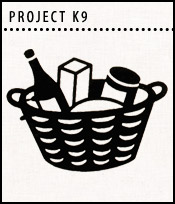
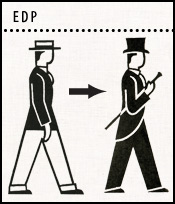
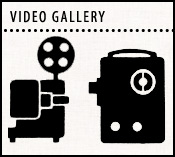
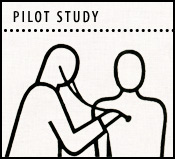
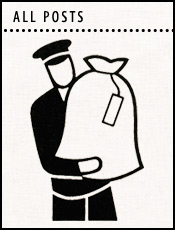
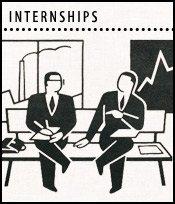




Comments
Smita alerted me to the existence of AsiaWheeling over a phone conversation while I was home for a couple weeks just recently (v glad that y’all ventured up to Penang, where I’m from – Smita assured me that she’d sold y’all on the 24/7 gastronomy party going on there) and I’m having lots of fun perusing your travel tales.
Cracked up particularly at the picture of the ‘destroyed car’ not so much because of the car itself, but because of the silly faces – M’sian graffiti at its most basic level of finesse – and also because of the word scrawled on the wall – can’t decipher whether it’s KAMBING or KAMPUNG. the former would simply be the Malay word for GOAT…and the other, VILLAGE. either one makes it a funny/interesting backdrop to your picture.
Best wishes for continued safe (and exciting!) travels.
Hi Woody!!
Been following your blog daily. Looks like an amazing trip–so beautiful and interesting and it also makes me hungry!! I hope you are having the time of your life…
Alisa
ps–Go buy some helmets!!
Hi Woody!!
Been following your blog daily. Looks like an amazing trip–so beautiful and interesting and it also makes me hungry!! I hope you are having the time of your life…
Alisa
ps–Go buy some helmets!!
@ Rie
Thank you so much for the commentary. We’re thrilled that you are reading. Any of you other readers who can translate bits of text that you see in the images, by all means comment!
@ Alisa
Yes we are having the time of our lives. And agreed, we owe you some helmets.
[…] we are pleased to announce, dear reader, that it was a breakfast buffet unprecedented since the Hotel Puri in Malacca Malaysia. There were many kinds of meat, hot and cold, eggs to order, porridge of all kinds, fruit, many […]